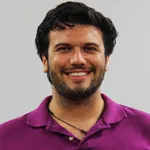The story of Brittany Maynard (the terminally ill East Bay woman who moved to Oregon in order to end her life legally) has gained a great deal of national attention recently, reigniting the debate about a person’s right to die with help from a doctor. Known as “death with dignity” to proponents, the issue of physician-assisted suicide (PAS) comes down to the fundamental question about what people should be able to decide about their own lives.
PAS exists as part of a larger spectrum of medically assisted death, which ranges from patients refusing ventilation tubes and other life-saving treatments to euthanasia (when a physician actively kills a patient rather than letting them die). The process of dying with dignity falls closer to the former part of this spectrum, just shy of true acts of euthanasia, and consists of patients administering lethal drugs prescribed to them by a physician rather than the physician themselves administering the drugs. Only patients who have terminal illnesses, good mental health and short prognoses become eligible for PAS; other people, including those who suffer from depression, are excluded from seeking PAS to prevent its abuse as a method of care.
Only five states, like Oregon, currently allow this kind of death with dignity, either by law or by court decision. But, California and 20 other jurisdictions currently have pro-PAS bills under consideration. California’s, modeled on Oregon’s law, nonetheless faces stiff opposition from both physicians’ and religious groups. The Medical Oncology Association of Southern California (MOASC), for example, asserts that the very idea of PAS “is against everything a physician stands for,” and organizations like the California Catholic Conference argue against suicide in any form on moral grounds.
But these specific points of opposition to PAS fail to understand a critical distinction in how the right to die is legally constructed. While terminally ill people must make the decision to “die with dignity” or “die naturally” using their own moral compasses, their right to do so must not be infringed. At the end of the day, no government in the United States has the standing to deny people their right to die via PAS because of the idea of personal patient autonomy.
Approaching the intersections of bioethics and law primarily from a deontological (or absolutist) standpoint usually requires looking at such patient autonomy as sacrosanct. This follows the precedent of the Belmont Report, which established the idea of informed consent in medicine in part because of the importance it placed on autonomy. The commission that drafted that report in 1979 was created in response to the previous several decades’ bioethical travesties, the most infamous of which was the Tuskegee Syphilis Study; that federally funded study spanned four decades, during which researchers used black men as guinea pigs to study the effects of syphilis on the body, even to the point of ordering local doctors to withhold antibiotics from participants. Other context cases for the Belmont Report include that of Henrietta Lacks (the poor, black woman from whom doctors created the first immortal human cell line without her knowledge) and the Willowbrook State School (where mentally handicapped children were deliberately infected with hepatitis in order to develop a hepatitis vaccine). Such cases looked at people as (discardable) means to ends rather than as ends in and of themselves, inherently violating their autonomy.
In the case of Maynard and other terminally ill patients, the state denies them true autonomy to choose the manner of their care. Current law in most states restricts the options of patients like Maynard to two: either succumbing to their disease over the course of several months or entering palliative care with the eventual purpose of inducing a coma and “pulling the plug.”
For some people, those options are appropriate, and they should continue to exist as possible paths for terminally ill people to take in their final days. But since they both often involve an incredible amount of suffering and, for the latter, expensive medical bills, not everyone sees those two options as viable for their situation despite being forced to choose between them. Furthermore, both require physicians to sit by and not intervene to prevent the death of their patients —which, by the misguided logic used by MOASC, also goes against the dogma of physicians to prevent death or harm. At the very least, this puts the current practice of patients refusing treatment on the same ethical level as PAS.
Considering the issue of harm, however, makes the more extreme measures of euthanasia ethically unfeasible. Anything that requires the physician to actively cause the death of a patient (even with the informed consent of that patient) ceases to be an issue of personal autonomy. Instead, such cases enter the realm of the Harm to Others Principle, outlined by John Stuart Mill. This principle says that an individual’s rights can face restrictions if their exercise would cause harm to other people. Euthanasia, as such, violates the norms and ethics of good medicine by entering into this territory.
So in the interest of increasing patient autonomy, opening the doors to true forms of euthanasia goes too far. Physician-assisted suicide, therefore, exists as the only viable option. Ethically indistinguishable (at worst) from current medical practices, dying with dignity needs to become a legally acceptable option for terminally ill people.
Contact Johnathan Bowes at jbowes ‘at’ stanford.edu.
